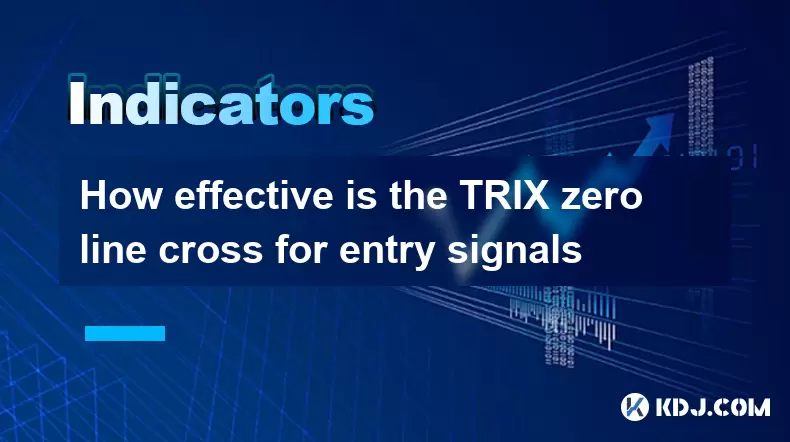-
 Bitcoin
Bitcoin $120400
1.77% -
 Ethereum
Ethereum $3615
7.90% -
 XRP
XRP $3.580
17.84% -
 Tether USDt
Tether USDt $1.001
0.06% -
 BNB
BNB $729.4
1.25% -
 Solana
Solana $179.9
5.04% -
 USDC
USDC $0.0000
0.01% -
 Dogecoin
Dogecoin $0.2311
8.22% -
 TRON
TRON $0.3226
4.04% -
 Cardano
Cardano $0.8490
12.85% -
 Hyperliquid
Hyperliquid $46.45
0.72% -
 Stellar
Stellar $0.4913
8.54% -
 Sui
Sui $4.027
2.00% -
 Chainlink
Chainlink $18.51
11.67% -
 Hedera
Hedera $0.2818
21.51% -
 Avalanche
Avalanche $24.03
7.40% -
 Bitcoin Cash
Bitcoin Cash $508.5
2.90% -
 Shiba Inu
Shiba Inu $0.00001496
3.24% -
 UNUS SED LEO
UNUS SED LEO $8.961
1.83% -
 Toncoin
Toncoin $3.264
3.13% -
 Litecoin
Litecoin $104.6
8.15% -
 Polkadot
Polkadot $4.389
6.11% -
 Uniswap
Uniswap $9.924
10.63% -
 Monero
Monero $337.9
0.49% -
 Pepe
Pepe $0.00001376
2.79% -
 Bitget Token
Bitget Token $4.830
2.46% -
 Ethena USDe
Ethena USDe $1.001
0.05% -
 Dai
Dai $1.000
0.02% -
 Aave
Aave $325.2
1.66% -
 Bittensor
Bittensor $423.7
-0.85%
How effective is the TRIX zero line cross for entry signals
The TRIX zero line cross helps identify momentum shifts in crypto trading, offering potential buy or sell signals when combined with volume and trend confirmation.
Jul 11, 2025 at 02:28 pm

Understanding the TRIX Indicator and Its Role in Cryptocurrency Trading
The TRIX (Triple Exponential Average) is a momentum oscillator widely used in technical analysis, especially within the cryptocurrency trading community. It is designed to filter out market noise and provide clearer signals by applying a triple exponential moving average to price data. The TRIX zero line cross occurs when the TRIX value moves from negative to positive or vice versa, signaling potential trend reversals.
In the context of cryptocurrency markets, which are known for high volatility and rapid price swings, understanding how effective the TRIX zero line cross is as an entry signal becomes crucial for traders seeking reliable setups.
How the TRIX Zero Line Cross Works
The TRIX indicator oscillates around a zero line, and its crossovers above or below this line are interpreted as bullish or bearish signals respectively. When the TRIX crosses above zero, it suggests that momentum is turning upward, potentially indicating a buying opportunity. Conversely, when the TRIX crosses below zero, it may suggest a shift toward bearish momentum, offering a possible sell signal.
In crypto trading, where trends can be sharp but short-lived, identifying these momentum shifts early can be valuable. However, due to the inherent volatility of digital assets, false signals are common. Therefore, the TRIX zero line cross should not be used in isolation but rather as part of a broader strategy incorporating other indicators or filters.
Effectiveness of TRIX Zero Line Cross in Entry Signal Generation
The effectiveness of the TRIX zero line cross depends on several factors:
- Market Conditions: In trending markets, the TRIX zero line cross tends to be more reliable than in sideways or choppy conditions.
- Timeframe Selection: Shorter timeframes like 15-minute or 1-hour charts may generate more frequent but less reliable signals, while longer timeframes such as daily or weekly charts tend to offer stronger confirmation.
- Volume Confirmation: A TRIX crossover accompanied by a spike in volume increases the probability of a valid trend change.
- Filtering with Moving Averages: Adding a simple or exponential moving average can help confirm the direction of the trend after a TRIX zero line cross.
For example, during a strong uptrend in Bitcoin (BTC), a TRIX crossing above zero might coincide with a breakout above a key resistance level, reinforcing the entry point. On the flip side, during consolidation phases, multiple zero line crosses may occur without leading to significant price movement.
Practical Steps to Implement TRIX Zero Line Cross in Crypto Trading
To effectively use the TRIX zero line cross for entry signals, follow these steps:
- Set Up Your Chart: Choose a preferred timeframe (e.g., 4-hour chart) and apply the TRIX indicator with default settings (typically 14 periods), though adjustments may be necessary depending on the asset and market conditions.
- Enable the Signal Line: Some platforms allow adding a signal line (EMA of TRIX), which can act as a trigger for entries when it crosses the TRIX line itself.
- Identify the Zero Line Crossover: Watch for the moment the TRIX line crosses above or below the zero line.
- Confirm with Price Action: Look for candlestick patterns, support/resistance levels, or trendlines aligning with the TRIX crossover.
- Use Volume Indicators: Check if there's an increase in volume at the time of the TRIX zero line cross to validate the strength of the move.
- Place Stop-Loss and Take Profit Levels: Set stop-loss orders just below recent swing lows (for long trades) or above swing highs (for short trades). Determine take profit zones based on Fibonacci extensions or previous resistance/support levels.
It’s important to backtest your strategy using historical data before deploying real capital. Many crypto exchanges and third-party tools like TradingView or Talib offer robust backtesting environments.
Common Pitfalls and How to Avoid Them
Despite its usefulness, the TRIX zero line cross is not foolproof. Here are some common pitfalls traders face:
- Overtrading: Too many TRIX zero line crosses in volatile markets can lead to entering too many low-probability trades.
- Ignoring Context: Entering a trade solely because of a TRIX crossover without considering the broader trend or market sentiment can result in losses.
- Using Default Settings Without Adjustment: Not all cryptocurrencies behave the same; adjusting the TRIX period to suit each asset can improve accuracy.
- Lack of Risk Management: Failing to set proper stop-loss levels or risking too much per trade can wipe out gains quickly, even if the TRIX signal was correct.
Avoiding these issues involves discipline, proper risk management, and combining the TRIX indicator with complementary tools like RSI, MACD, or Bollinger Bands.
Frequently Asked Questions
Q: Can the TRIX zero line cross be used in both bull and bear markets?
Yes, the TRIX zero line cross works in both types of markets. In bull markets, look for TRIX crossing above zero as a buy signal. In bear markets, focus on TRIX crossing below zero as a potential shorting opportunity.
Q: Should I always enter a trade immediately after a TRIX zero line cross?
Not necessarily. Waiting for additional confirmation such as a candlestick close beyond a key level or volume surge can increase the reliability of the TRIX signal.
Q: What is the ideal TRIX setting for intraday crypto trading?
While the default setting of 14 is commonly used, intraday traders often adjust the TRIX period between 9 and 21 depending on the asset and volatility. Experimentation and backtesting are essential.
Q: Is the TRIX indicator better than MACD for crypto trading?
Both have strengths. The MACD is better for spotting divergences and trend changes, while TRIX excels at filtering noise and identifying momentum shifts. Using them together can enhance decision-making.
Disclaimer:info@kdj.com
The information provided is not trading advice. kdj.com does not assume any responsibility for any investments made based on the information provided in this article. Cryptocurrencies are highly volatile and it is highly recommended that you invest with caution after thorough research!
If you believe that the content used on this website infringes your copyright, please contact us immediately (info@kdj.com) and we will delete it promptly.
- Bitcoin Holdings and the Smarter Web: A Match Made in Digital Heaven?
- 2025-07-18 12:10:12
- Bitcoin, MSTR & Saylor's Strategy: A Winning Trifecta?
- 2025-07-18 08:30:13
- Bitcoin Mortgages Down Under: A New Wave in Australian Homeownership?
- 2025-07-18 08:50:12
- Cryptocurrencies, Bitcoin, and the Next Wave: What's Coming?
- 2025-07-18 08:50:12
- Maharashtra Government Nurses Launch Indefinite Strike: A Healthcare Crisis?
- 2025-07-18 04:30:13
- Hilbert Group, Syntetika, and Tokenization: Bridging DeFi and Institutional Finance
- 2025-07-18 05:30:12
Related knowledge

Advanced RSI strategies for crypto
Jul 13,2025 at 11:01am
Understanding the Basics of RSI in Cryptocurrency TradingThe Relative Strength Index (RSI) is a momentum oscillator used to measure the speed and chan...

Crypto RSI for day trading
Jul 12,2025 at 11:14am
Understanding RSI in the Context of Cryptocurrency TradingThe Relative Strength Index (RSI) is a momentum oscillator used to measure the speed and cha...

Crypto RSI for scalping
Jul 12,2025 at 11:00pm
Understanding RSI in the Context of Crypto TradingThe Relative Strength Index (RSI) is a momentum oscillator widely used by traders to measure the spe...

What does an RSI of 30 mean in crypto
Jul 15,2025 at 07:07pm
Understanding RSI in Cryptocurrency TradingRelative Strength Index (RSI) is a momentum oscillator widely used in cryptocurrency trading to measure the...

What does an RSI of 70 mean in crypto
Jul 13,2025 at 06:07pm
Understanding the RSI Indicator in Cryptocurrency TradingThe Relative Strength Index (RSI) is a widely used technical analysis tool that helps traders...

Does RSI work in a bear market for crypto
Jul 16,2025 at 01:36pm
Understanding RSI in Cryptocurrency TradingThe Relative Strength Index (RSI) is a momentum oscillator used by traders to measure the speed and change ...

Advanced RSI strategies for crypto
Jul 13,2025 at 11:01am
Understanding the Basics of RSI in Cryptocurrency TradingThe Relative Strength Index (RSI) is a momentum oscillator used to measure the speed and chan...

Crypto RSI for day trading
Jul 12,2025 at 11:14am
Understanding RSI in the Context of Cryptocurrency TradingThe Relative Strength Index (RSI) is a momentum oscillator used to measure the speed and cha...

Crypto RSI for scalping
Jul 12,2025 at 11:00pm
Understanding RSI in the Context of Crypto TradingThe Relative Strength Index (RSI) is a momentum oscillator widely used by traders to measure the spe...

What does an RSI of 30 mean in crypto
Jul 15,2025 at 07:07pm
Understanding RSI in Cryptocurrency TradingRelative Strength Index (RSI) is a momentum oscillator widely used in cryptocurrency trading to measure the...

What does an RSI of 70 mean in crypto
Jul 13,2025 at 06:07pm
Understanding the RSI Indicator in Cryptocurrency TradingThe Relative Strength Index (RSI) is a widely used technical analysis tool that helps traders...

Does RSI work in a bear market for crypto
Jul 16,2025 at 01:36pm
Understanding RSI in Cryptocurrency TradingThe Relative Strength Index (RSI) is a momentum oscillator used by traders to measure the speed and change ...
See all articles

























































































